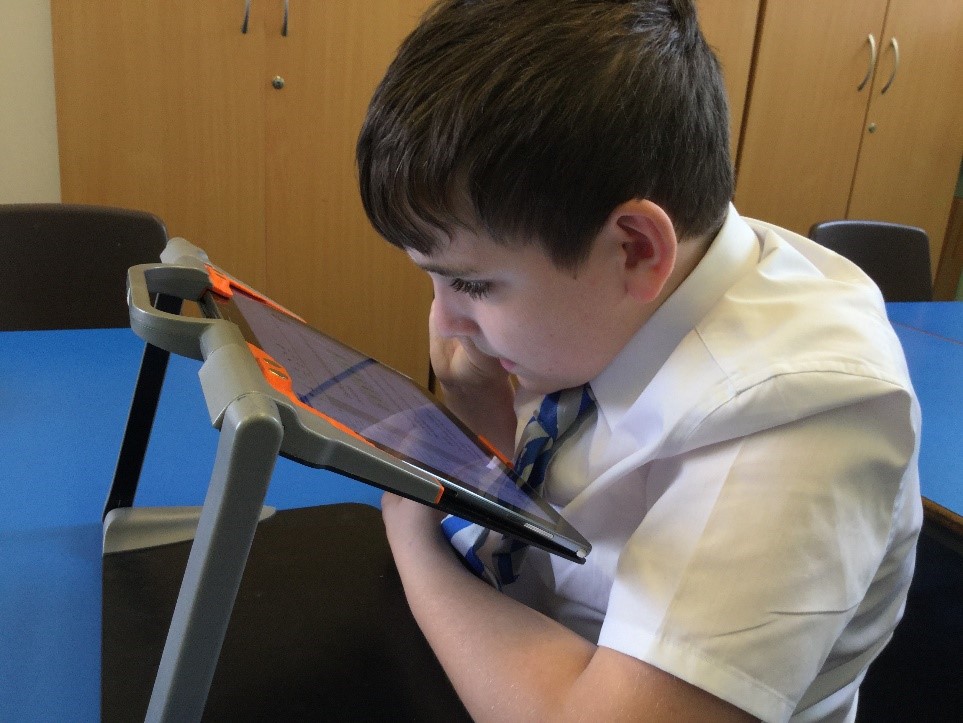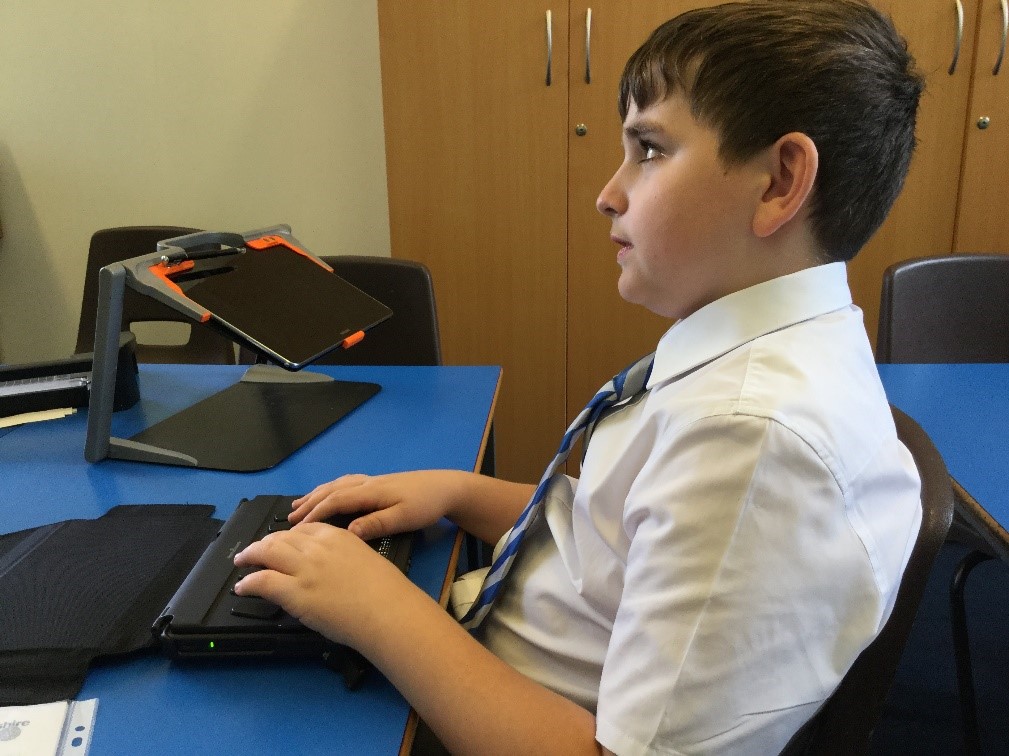Throughout the year, we are publishing member stories to showcase your fantastic work in supporting children and young people’s well-being, understanding, knowledge and skills. In this edition, the stars in our eyes are Harry and the fantastic team supporting him to be independent and to access learning alongside his peers.
Meet Harry. Harry is 10 years old and in his last year of Primary School. Harry lost most of his vision in one eye due to retinoblastoma when he was a baby. His vision in the other eye is 1.02 Logmar. He reads N36 as well as being a Braille user. Early on in Primary school it became apparent that Harry struggled reading enlarged books. He didn’t enjoy them as there was so little on one page. Once he had learnt the whole alphabet he started to read small Braille books and the joy of reading returned. He has now finished the Grade 2 course and reads books by David Walliams and Roald Dahl.

At every step of his school journey, Harry has been supported to use technology to access the same work as his peers
Beginning by learning Braille on a Smart Brailler and then on a Perkins Brailler, Harry soon got a Prodigi for near and distance viewing. Harry now uses this regularly to do his Maths work – he writes on the worksheet sent to him by email, prints it or sends it back to the teacher.
Harry learnt touch typing, he uses SuperNova Accessibility software on his laptop and is a real whizz with his fingers on the keyboard, typing and knowing lots of keyboard shortcuts.
In year 4 Harry switched from the Perkins Brailler to a Braillenote Touch, which he loves. He also has a large monitor connected to the whiteboard, as the connection via SuperNova wasn’t reliable enough.
Harry:
“I’m Harry and I’m 10 years old. I have to use a lot of technology every day at school. I use a lot of things such as a Laptop, own printer, a braille note, Prodigi and even more. It all just started out with a simple Perkins braille machine and now it is way more advanced than the old days. Some parts of it are amazing such as Supernova on the laptop lets me magnify text, e-mailing my work to my teacher when I’m finished and much more. But there are some negatives like when a bit of equipment suddenly stops working when I really need it working, but I am starting to get a bit into the habit of telling an adult when something like this happens!”
Harry’s mum:
“Harry is the youngest of 4 siblings and has always strived to be independent just like them. Once he started school, he soon found that life was starting to be tricky, despite him being very clever his lack of eyesight meant he struggled to keep up with his peers. He was reluctant to learn Braille at first as it made him different, but once he mastered it and could read at speed and join in with his friends, he became hungry for more technology. Seeing him use his equipment at home during lockdown was mind blowing. It has opened the world for him, and he can use it to do exactly the same work as his classmates. He loves school and has a wonderful relationship with his QTVI, and I am more than grateful for her persistence in getting Harry all the equipment he needs.”

Finding the right combination of equipment and technology
Using such an array of equipment is not only a blessing, but apart from the space it takes up in the classroom, it also needs a lot of willingness on behalf of the school to try out different ways of working – we have to think outside the box!
An example is the large monitor: after many hours spent by the QTVI, the TA and the school technician, trying to get the connection to the whiteboard reliable via the WiFi system, we concluded a stand-alone monitor needed to be bought, which could be plugged in.
Working together and regularly reviewing ways of working in the classroom have been essential throughout Harry’s years at Primary school. This includes decisions on which piece of equipment is suitable for which task.
There was a time when we decided to not use the Prodigi for a while for instance, as Harry was fiddling a lot and got very distracted by its possibilities. Such decisions were taken as a team: the SENCO, class teacher, Teaching Assistant, QTVI and often the school technician, including Harry when appropriate and working closely together with parents.
To include Harry in the classroom and help him access learning like his peers we needed everybody’s willingness to engage and go the extra mile. We have also benefitted greatly from what technology is available – and of course from Harry’s enthusiasm to work with it and explore each new piece of equipment and what it can do!
Many thanks to Harry, his mum and Katharina Walls, QTVI for sharing their story with us.
Share your story
Do you have a story to share that illustrates good practice across the curriculum, or beyond – we’d love to hear from you – email membership@viewweb.org.uk
